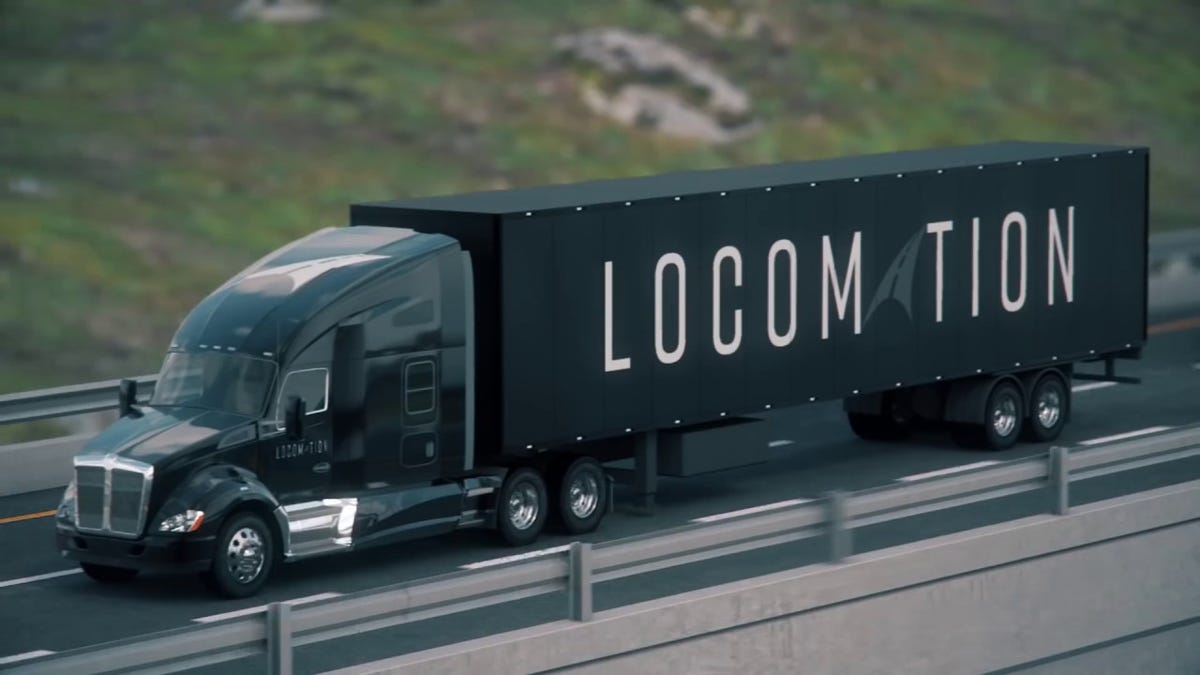
Locomation
Can autonomous vehicles lower the carbon footprint of the transportation and shipping sector? According to a new environmental impact evaluation, the answer seems to be an emphatic yes in certain cases.
Locomation, the developer of autonomous trucking technology solutions, is trumpeting the findings of an independent environmental impact evaluation that found its Autonomous Relay Convoy (ARC) system will dramatically reduce the Greenhouse Gas (GHG) footprint, fuel consumption, and operating costs of transporting goods by truck. That’s potentially an important selling point as the urgency to clean up the environmental impact of the booming logistics sector rises. Freight, in particular, is a larger emitter of particulate matter (PM), nitrogen oxides (NOx), and volatile organic compounds (VOCs). According to the EPA, the transportation sector is responsible for:
- Over 50% of NOx total emissions inventory in the U.S.
- Over 30% of VOCs emissions in the U.S.
- Over 20% of PM emissions in the U.S.
Autonomous freight potentially makes a big impact through carefully structured driving efficiencies in which routes, speed, and deviations can be carefully controlled. However, we’re still a ways from seeing fully autonomous trucks in regular freight use on American roads.
See also: Follow-the-leader: A shortcut to autonomous trucking.
Locomation’s solution, however, has a much lower adoption threshold. The efficiency of its system comes via a strategy of convoying multiple trucks that are electronically tethered to follow the leader, which a human drives.
“This report confirms that Locomation’s ARC system means dramatic efficiency gains, saving fuel and eliminating idling and empty miles, and can help carriers and shippers dramatically reduce their Scope 1 and Scope 3 Greenhouse Gas emissions,” explains Dr. Çetin Meriçli, Locomation’s CEO and co-founder. “We are proud to be the first company to verify its green claims with an independent, third-party, science-based review, and we invite anyone making claims around environmental impact or fuel consumption to do the same. “
The Human-Guided Autonomy solution enables one driver to operate the lead truck while a second driver rests in the follower truck, which is operating autonomously. In a drill that calls to mind a high school relay, the trucks change places to allow each driver to take turns leading and resting in compliance with U.S. Department of Transportation Hours-of-Service regulations. This scheme enables carriers to safely operate two trucks for 20-22 hours per day, delivering double the cargo, faster, and twice the distance.
There’s an obvious efficiency advantage here, but less obvious is the large emissions reduction. The recent report, conducted by Boundless Impact Research & Analytics, Inc, concluded that Locomation’s technology would, in comparison to normal Class 8 freight transport, decrease Fuel Consumption 21% and lower photochemical ozone formation by 22%. The Boundless test used a methodology based on a standard model for the transportation of goods by a long-haul Class 8 truck carrying 1 ton of goods for 1 kilometer (km) on a highway.
“Our environmental impact assessment of Locomation’s technology provided a science-based and independent critique and comparison of the environmental benefits of several trucking technologies,” said Boundless Director of Research Bret Strogen. “Locomation’s autonomous trucking system would offer a significant environmental improvement over other common fuel reduction technologies such as Cooperative Adaptive Cruise Control and Idle Reduction Technology.”
The cool thing here is that the technology is already compliant with existing transportation regulations. The company is fast moving toward claiming bragging rights as the first autonomous trucking technology company to routinely engage in commercial operations at scale in the United States with its ARC system starting in late 2022 with Wilson Logistics and following with PGT Trucking in 2023.
Credit: Source link





















